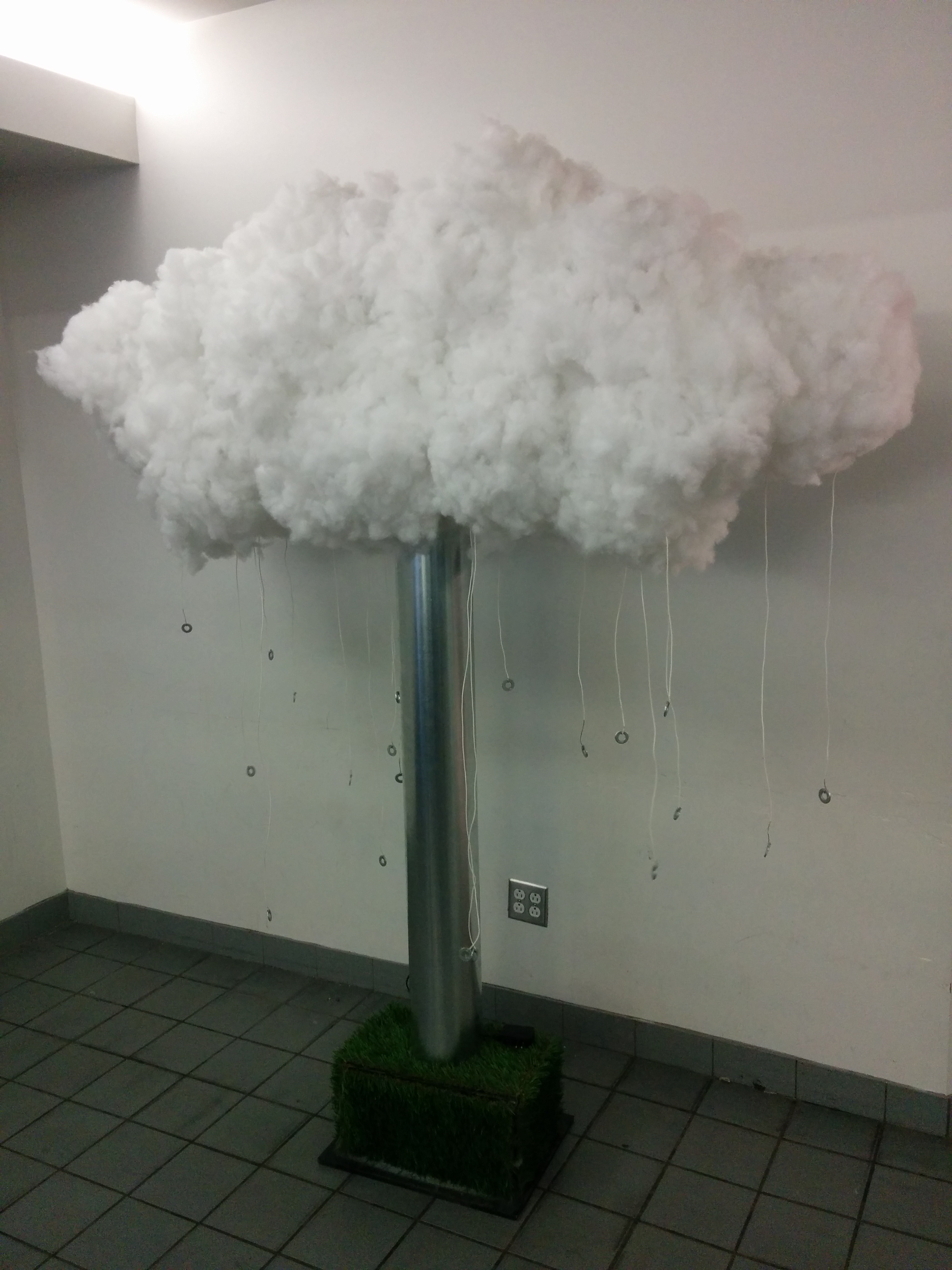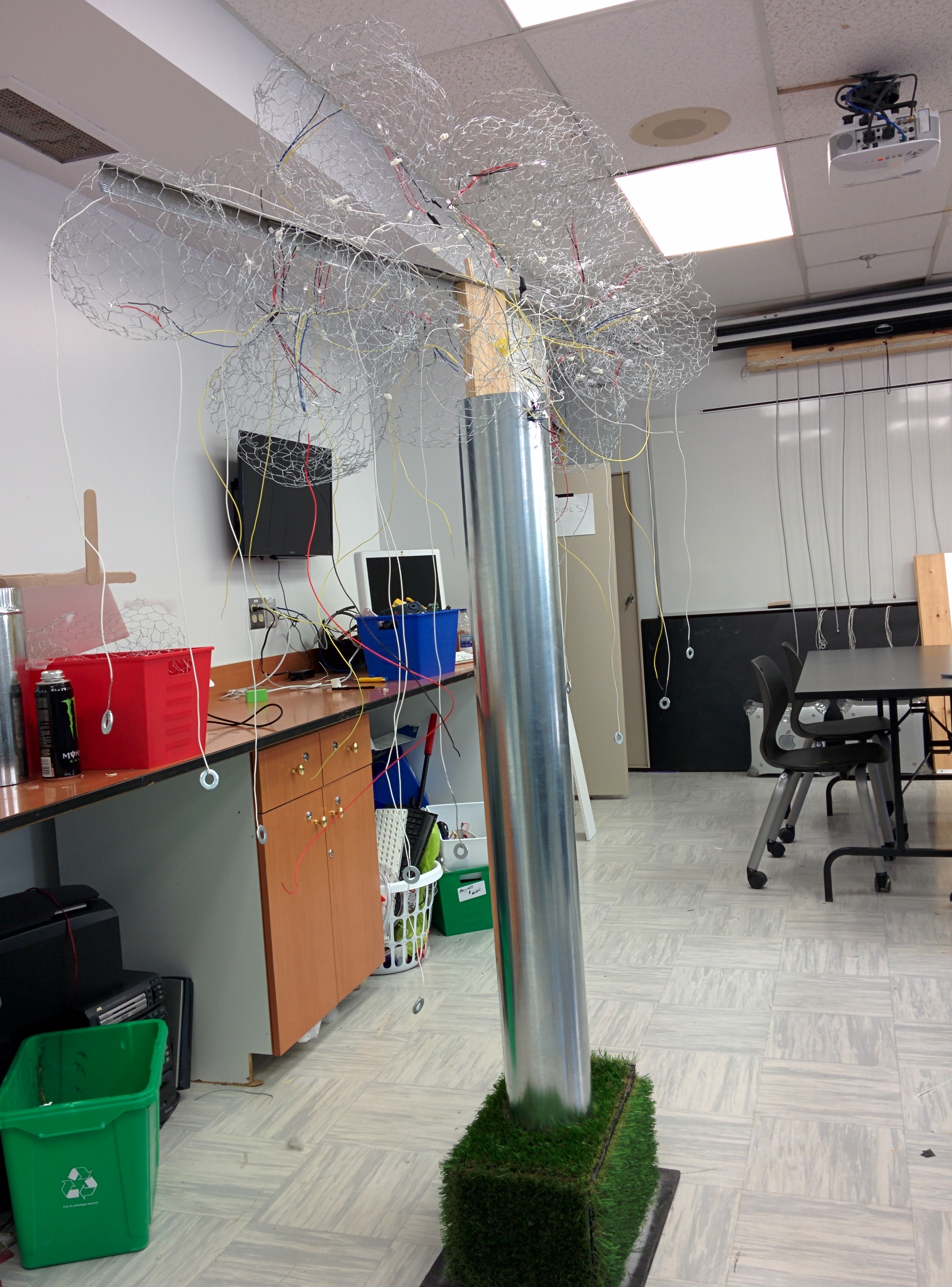Cumulonimbus
CEGEP final project
Timeline
Jan 2015 - May 2015
Responsibilities
Interaction Design / Arduino Programming / Circuitry / Installation Design
Team
Zach Ahmed / Tiara Bucci / Kyle Gapulan / Matthiew Vaccariello

Creative Computation / Interaction Design project based around interacting with something that is usually intangible
This interactive sculpture was my final project for the Interactive Media Arts program at Dawson College. My team wanted to make an interactive sculpture that would engage viewers in a public space by being interactive and playful.
The Challenge
The brief was to come up with a project that was interactive or recative to be put on display somewhere on campus for students to view or interact with.
Constraints
Being the final for an interactive arts program, the only constraints that were given to us were that the project had to be interactive and leverage some kind of technology for it to be considered for display. We also discovered that our budget was another constraint since the
The Approach
Since I was going to be doing the programming, we were going back and forth between either using a twitter API or an arduino to run the interactions. In the end we decided that we wanted our viewrs to be able to interct directly with our sculpture so we chose to use the arduino. With the arduino we wanted to make the cloud light up in various places to simulate lightning, and to do it we decided on using capacitive touch sensors to detect when a user would touch the sculpture.
Process
Once we had an idea of what we were going make, we had to decide on what materials to use. Since this piece would be on display in public, we had to use materials that would be durable enough to withstand use, while also being budget friendly and eco-conscious. We found scraps of sheet metal from the metal shop that we used as the stem, and repurposed a wooden base from another project to house the arduino and power-supply. For the could itself, we decided on using polester stuffing and chicken-wire to mould the cloud cells.
We powered the cloud using an Arduino Mega, three capacitive-touch sensors and approximately 75 white leds. To actute the capacitive sensors, we decided to use metal washers we found and attached them to wires hanging from the cloud. This gave us a conductive material for users to touch, and the wires resembled rain.
After assembling all the materials we got to work on the build. I delegated shaping and putting together the frame to my other team-mates while I worked on the Arduino code. In between coding and shaping sessions we worked on soldering the LEDs into various groups that would be lit up when touched. To add a surprise factor, I added a function in the code so that after a certain number of touches, the cloud cells would flash in a random order.

Outcome
As a team we were really happy with how our cloud turned out. The scuplture worked as anticipated and was placed in the main cafeteria of Dawson college, where it got a lot of use from students and faculty alike. I'm proud of this project because I learned a lot while making it and it was my first big project where I worked with the Arduino platform.
We got great feedback from our profs, and other faculty in the school, and it even won a 'best in class' award, but there's always room for improvement. If I were to do it again with the skills that I have now, I would make the intraction more complex rather than touching a metal washer and having the same outcome most of the time.